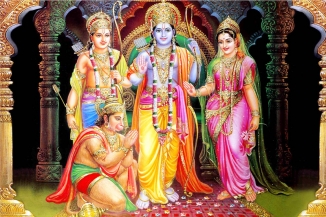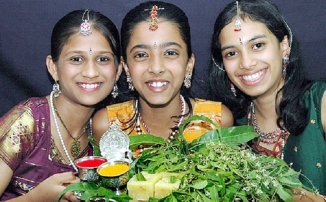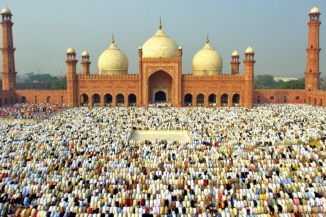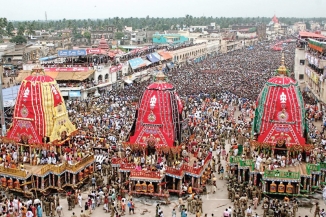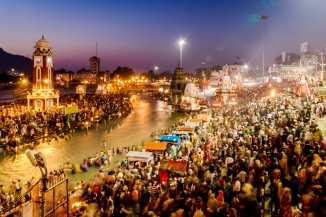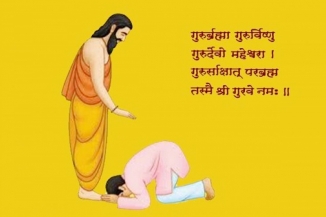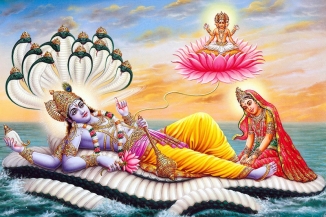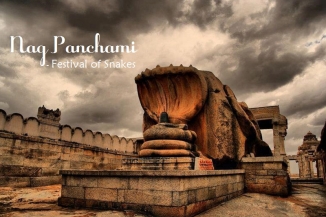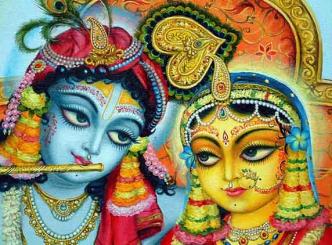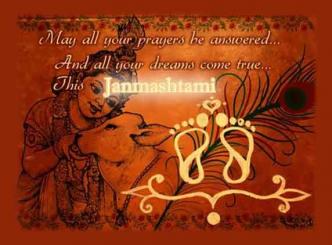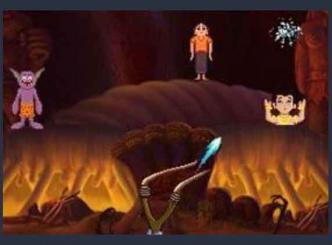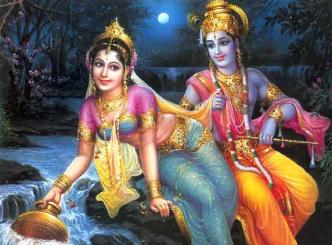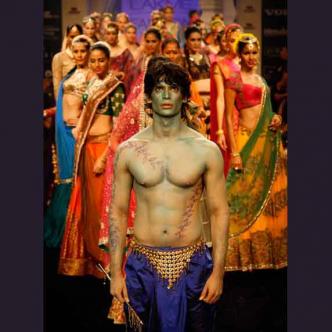
Ashtami rohini, birthday of Lord SriKrishna is being celebrated as the janmashtami, all over the world. The festival is celebrated on the eighth day (Ashtami) of the Krishna Paksha (dark fortnight) of the month of Shravana (August–September) as per the Hindu calendar. Rasa lila, dramatic enactments of the life of Krishna, are a special feature in regions of Mathura and Vrindavan, and regions following Vaishnavism in Manipur.
While the Rasa lila re-creates the flirtatious aspects of Krishna's youthful days, the Dahi Handi celebrate God's playful and mischievous side, where teams of young men form human towers to reach a high-hanging pot of curd and break it. This tradition, also known as uriadi, is a major event in Tamil Nadu on Gokulashtami.
People all over the world, especially Hindus celebrate Janmashtami by fasting, worshipping Krishna and staying up until midnight and offer prayers at auspicious time when Krishna is believed to have been born. Images of Krishna's infancy are placed in swings and cradles in temples and homes. At midnight, devotees gather around for devotional songs, dance and exchange gifts. Some temples also conduct readings of the Hindu religious scripture Bhagavad Gita.
Janmaashtami or Gokulashtami, popularly known in Mumbai and Pune as Dahi Handi, is celebrated as an event which involves making a human pyramid and breaking an earthen pot (handi) filled with buttermilk (dahi), which is tied at a convenient height. Places in Uttar Pradesh that are associated with Krishna's childhood, such as Mathura, Gokul and Vrindavan, attract visitors from all over India, who go there to participate in the festival celebrations.
In the eastern state of Odisha, in the region around Puri and in Nabadwip, West Bengal people celebrate Janmashtami by fasting and worship until midnight. Janmaashtami is celebrated in Assam mostly at the homes. Namghars and the temples usually celebrate with pujas and sharing food as prasad. Janmaashtami, popularly known in Manipur as Krishna Janma, is a significant festival celebrated at two temples in Imphal, the capital city of Manipur.
In Tamil Nadu, people decorate the floor with kolams (decorative pattern drawn with rice batter). Geetha Govindam and other such devotional songs are sung in praise of Lord Krishna. Then, they draw the footprints of Lord Krishna from the threshold of the house till the pooja room, which depicts the arrival of Lord Krishna into the house.
In Andhra Pradesh recitation of shlokas and devotional songs are the characteristics of this festival. Another unique feature is that, young boys are dress up as Lord Krishna and they visit neighbors and friends.
Nepal observe Janmashtami by fasting until midnight. They chant slokas from the Bhagavad Gita and sing bhajans. Janmashthami is celebrated in Bangladesh with a procession from Dhakeshwari Temple in Dhaka, the National Temple of Bangladesh and then proceeds through the streets of Old Dhaka.
Janmashthami is celebrated by Pakistani Hindus in the Shri Swaminarayan Mandir in Karachi with the singing of bhajans and delivering of sermons on Krishna. Janmastami in Fiji is known as "Krishna Ashtami". Most Hindus in Fiji have ancestors who have originated from Uttar Pradesh, Bihar, and Tamil Nadu, making this an especially important festival for them.
The first ever elected government official in the world to issue a proclamation for the celebration of Janmashtami is by Janet Napolitano, while she was the Governor of Arizona. The festival is celebrated widely by Hindus in the Caribbean countries of Guyana, Trinidad and Tobago, Jamaica as well as the former Dutch colony of Suriname.
By Premji



